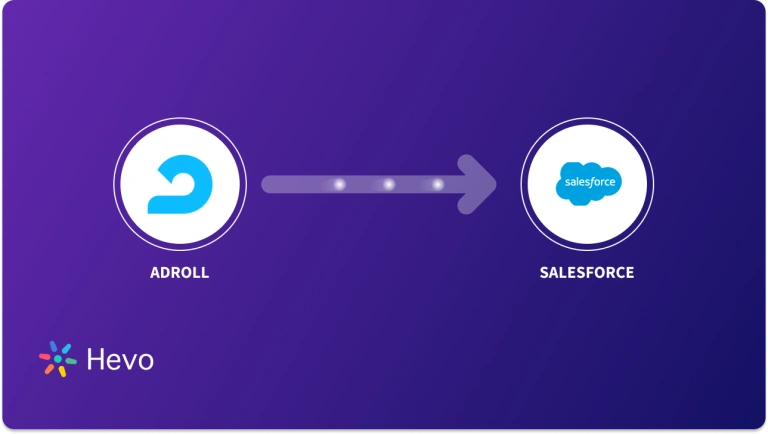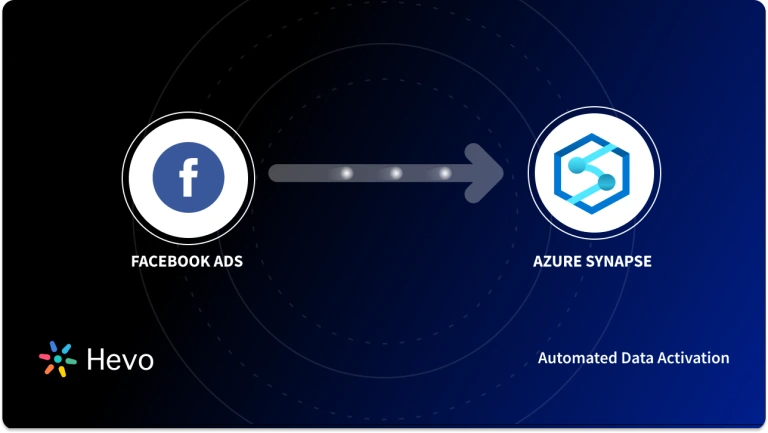In the whirlwind of online shopping, website visitors often get lost in the digital crowd. They browse and add your products to the cart, but they’re gone soon, leaving you wondering what went wrong. To reignite customer interest, you can analyze insights obtained from customer touchpoints.
If you regularly run ad campaigns on social media platforms, consider the AdRoll Facebook integration. You can better understand consumer behavior by seamlessly combining AdRoll’s retargeting expertise with Facebook’s vast user base. This article will showcase two step-by-step guides to conduct AdRoll Facebook integration.
Table of Contents
AdRoll Overview

AdRoll is a platform that helps your business manage and run campaigns across multiple channels, including social media, email, display, and video ads. It serves thousands of brands and billions of shoppers, providing a comprehensive solution for digital marketing needs. This marketing and advertising platform gives the growing Direct-to-Consumer brands the power to connect with their target audiences on the go.
Here are some features of AdRoll:
- Targeting: AdRoll’s targeting feature helps you reach your audience based on age, location, income, and other relevant factors. Additionally, it targets consumers based on their browsing habits and interests, ensuring your ads resonate with their needs.
- Retargeting: It showcases previously viewed products or recommends similar items, keeping website visitors engaged and reminding them of what caught their eye. Also, AdRoll helps you reconnect with the visitors who left items behind in their carts, encouraging them to complete their purchases.
- AI-Driven Marketing: AdRoll’s machine learning engine, BidIQ, analyzes vast amounts of data to automatically set bids that optimize your campaign budget and maximize return on investment (ROI).
Unlock seamless insights by migrating AdRoll and Facebook data with Hevo! Automate your pipelines, unify marketing metrics, and supercharge your campaign performance effortlessly. Hevo streamlines the process of migrating data by offering:
- Seamlessly data transfer between AdRoll, Facebook, and 150+ other sources.
- Risk management and security framework for cloud-based systems with SOC2 Compliance.
- Always up-to-date data with real-time data sync.
Don’t just take our word for it—try Hevo and experience why industry leaders like Whatfix say,” We’re extremely happy to have Hevo on our side.”
Get Started with Hevo for FreeFacebook Overview
Facebook, owned by Meta Platforms, is a social media and social networking service. In addition to being a social communication platform, it supports over 10 million businesses in marketing their products. By setting your business goals and using the free tools provided by Facebook, you can create engaging content to advertise your brand to your audience. You can increase brand awareness, connect with potential consumers, and nurture leads by strategically posting on Facebook pages, groups, and events.
Methods to Conduct AdRoll Facebook Integration
You can directly integrate Facebook Lead Ads with AdRoll or you can export your CSV files into AdRoll. Let’s look at both methods in more detail.
Method 1: Direct AdRoll Facebook Integration
Step 1: Log in to your AdRoll platform.
Step 2: You must start creating a Facebook campaign.
Step 3: Once you have set up your campaign, click on the Connect to Facebook option.
Step 4: You must give access to AdRoll advertiser if you have different pages connected to your Facebook account.
Step 5: Click on Select to start the direct AdRoll Facebook integration.
Limitations of Direct AdRoll Facebook Integration
- AdRoll primarily focuses on retargeting website visitors, while Facebook enhances the broader campaign goals. Data sharing between the two platforms might be restricted to metrics relevant to their functionalities.
Method 2: Export Data from AdRoll to Facebook through CSV Files
Take a look at the steps that help you load data from AdRoll to Facebook using CSV files.
Step 1. Upload Your Contacts in AdRoll
Look at the steps below to upload your contacts to AdRoll.
- Go to the ☰ on your left-hand side and click Contacts under Audiences.
- Click on the Add Contacts prompt.

- Under the Add Contacts tab, you can drag and drop or select your file. Choose the file you want to import.
- Once you have chosen the file, click on Next.

- After selecting your file, AdRoll gives you options to either create a new list, add to an existing list, or add to your unsubscribe list.
- Click on the Select an audience drop-down.

- If your label doesn’t fit any of the default fields, you can add a custom field by typing it in the search and choosing Create New Field.

- When you have finished all the changes, click on Complete Import.

Step 2. Export Your Data from AdRoll to Facebook Ads Manager
The following steps show you how to transfer your data from AdRoll to Facebook.
- Sign in to your Facebook business account and open the Ads Manager tab.
- Select the Create new ads option.
- Select Custom Audiences and choose the option Customer List.
- Upload your data files that contain customer information, emails, phone numbers, or mobile advertising IDs. Ensure that these files are in .csv or .txt format.
- After the import has been completed successfully, click on Upload & Create. After importing your list, it may take up to 30 minutes for your audience to be ready for use. Facebook sends you a notification when your audience is ready. Also, you can check the status in the Ads Manager tab.


Limitations of AdRoll Facebook Integration through the CSV Method
- The records in your CSV files should include separate lines or a list separated by commas. Inconsistent data formats may yield incorrect results during the AdRoll Facebook integration.
- Even when integrated, AdRoll and Facebook ads are two separate outlets. You’ll still need to manage the campaign and budget, as well as optimize features in each platform’s interface.
Use Cases of AdRoll Facebook Integration
- Retargeting Audiences: Re-engage visitors who interacted with your site or products by serving personalized ads on Facebook.
- Dynamic Product Ads: Automatically showcase relevant products to potential customers on Facebook, enhancing conversion rates.
- Cross-Platform Analytics: Track performance metrics from Facebook ads and compare them with campaigns across other channels for better insights.
- Budget Optimization: Allocate ad spend effectively across Facebook and other platforms based on AdRoll’s performance insights.
- Audience Segmentation: Utilize AdRoll’s segmentation capabilities to target specific customer groups with tailored Facebook ad content.
- Enhanced ROI: Leverage AdRoll’s AI-driven insights to improve ad effectiveness and maximize returns on Facebook campaigns.
- Lookalike Audiences: Expand reach by targeting Facebook lookalike audiences built from AdRoll’s data.
Conclusion
With this article, you know the steps to conduct AdRoll Facebook data transfer. AdRoll Facebook integration offers a powerful solution for your business to enhance its retargeting efforts and reach a wider audience. By combining AdRoll’s remarketing expertise with Facebook’s widespread audience, you can reconnect with website visitors who have shown interest in your products or services.
To automate the integration process, you can turn to no-code ELT platforms. Hevo is one such platform that provides its users with cost-effective and real-time data pipelines. With over 150+ source connectors, you can integrate your data from multiple platforms and conduct transformation before loading it into your desired destination.
If you wish to export your AdRoll data into a data warehouse with Hevo, Sign up for a 14-day free trial or you can read this article to learn more about the process.
Frequently Asked Questions (FAQs)
Q. What is the major difference between AdRoll and Facebook advertising?
Facebook advertising can reach over 2 billion active user accounts, providing sophisticated targeting based on demographics, interests, and behavior. On the other hand, AdRoll extends its reach across multiple display networks and platforms, providing diverse placement options.
Q. How much does a Facebook ad cost?
Facebook ad costs vary based on factors like target audience, ad type, and bidding strategy. Average costs range between $0.50 to $2.00 per click, but competitive industries may cost more.
Q. How do I add my Instagram account to my Facebook ads manager?
Go to Business Settings in Facebook.
Navigate to Accounts > Instagram Accounts.
Click Add, log into your Instagram account, and link it.











